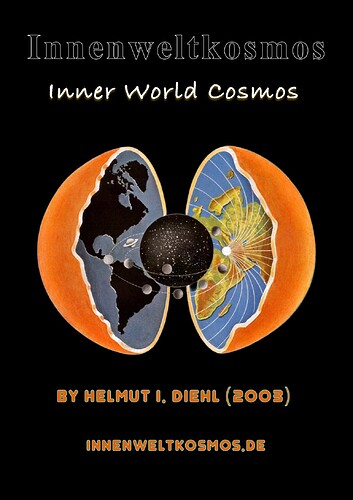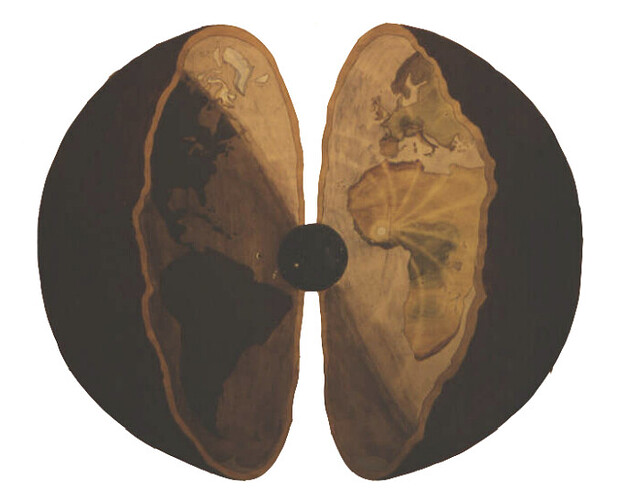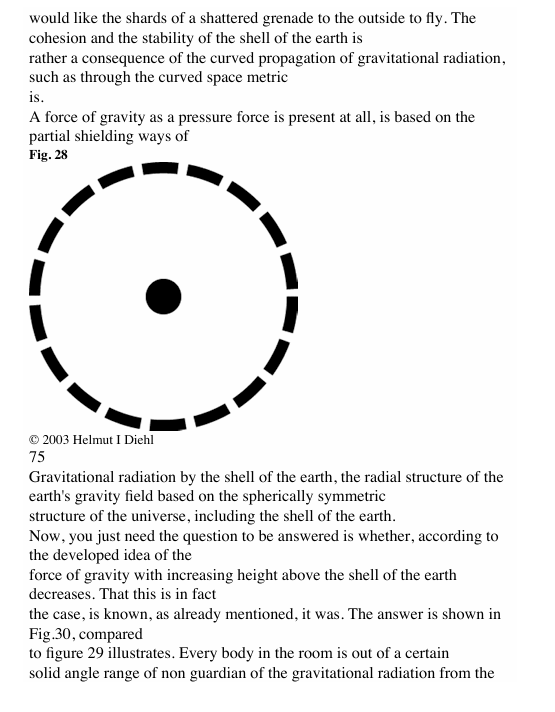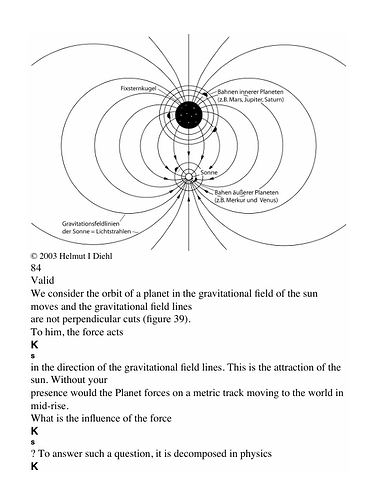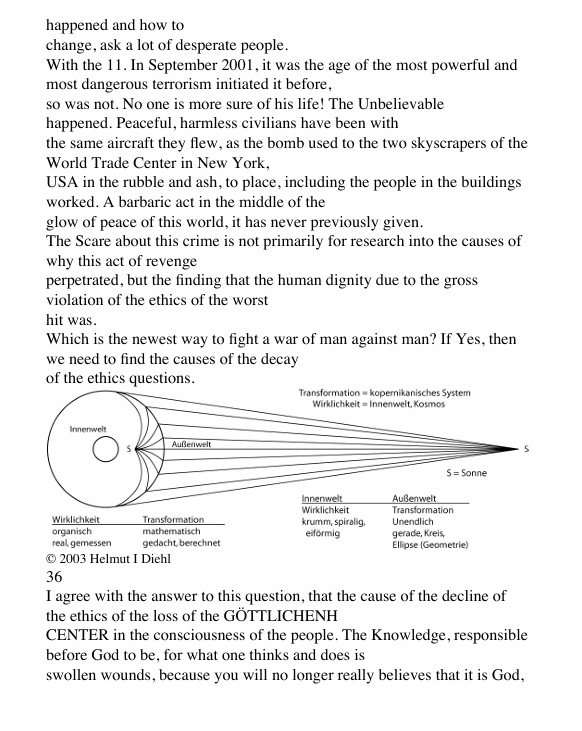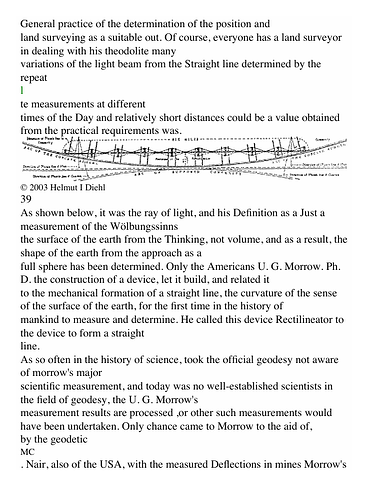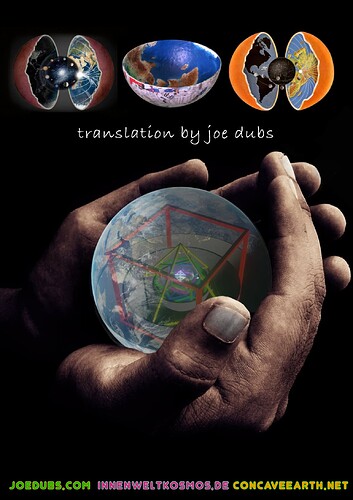The Inner World of the Cosmos by Helmut Diehl 2003
The-Inner-World-of-the-Cosmos-by-Helmut-I-Diehl-2003.pdf (1.3 MB)
Overview of The Inner World of the Cosmos by Helmut I. Diehl
Overview
The Inner World of the Cosmos by Helmut I. Diehl (2003) offers a provocative exploration into a cosmos conceived as an inwardly oriented reality. This work proposes a reinterpretation of traditional geodesy and astrophysics, suggesting that the Earth is not convex but concave, with all celestial bodies contained within its hollow interior. The book integrates physics, optics, and ancient philosophical ideas to challenge conventional cosmological models, emphasizing the impact of perceptual limitations on humanity’s understanding of the universe.
Diehl’s work is not merely a scientific discourse but also delves into metaphysical and philosophical implications, encouraging a holistic view of existence where geometry, perception, and ancient wisdom converge to reveal a self-contained cosmos.
Images from the Book
Structure and Content
- Foreword Diehl dedicates his work to predecessors like Cyrus R. Teed and U.G. Morrow, acknowledging their influence on concave Earth cosmology. He highlights the need for a paradigm shift, rooted in scientific inquiry and spiritual reflection, to align modern knowledge with a more holistic understanding of the cosmos.
- The Holistic Picture of the World This chapter contrasts historical cosmological models, presenting the concave Earth as a unifying concept that incorporates geodesy, optics, and metaphysical thought. Diehl critiques the modern heliocentric paradigm for its reliance on perception rather than deeper truths.
- Geodesy and Measurements Diehl revisits historical geodetic measurements, notably those by Teed and Morrow, asserting their compatibility with a concave Earth model. He critiques the biases of mainstream science in dismissing these findings and explores the limitations of current geodetic instrumentation.
- Optical Illusions and Light Curvature The bending of light upward is central to Diehl’s thesis, explaining how this phenomenon creates the illusion of a convex Earth. He provides mathematical and observational evidence to argue that human perception is inherently flawed when interpreting the true shape of the Earth.
- The Horizon and Celestial Sphere Diehl discusses how the perceived circular horizon and the apparent motion of celestial bodies align with a concave cosmology. He describes the celestial sphere as a compact, central entity rather than a distant, expansive reality.
- Philosophical and Ethical Implications Expanding beyond science, Diehl explores the ethical ramifications of a concave Earth model. He calls for a reevaluation of humanity’s role within a finite, interconnected system, emphasizing sustainability and spiritual introspection.
- Concluding Remarks Diehl concludes with a call for open-mindedness and interdisciplinary collaboration, urging scientists, philosophers, and theologians to reconsider long-held assumptions about the cosmos.
Key Themes and Insights
- Geometric Inversion: A central premise, Diehl asserts that the concave Earth model resolves many inconsistencies in traditional cosmology through the mathematical principle of inversion.
- Optical Perception: The bending of light explains numerous optical illusions that support the appearance of a convex Earth.
- Ancient Cosmologies: Diehl integrates ancient wisdom with modern science, aligning the concave Earth model with historical and metaphysical traditions.
- Self-Contained Universe: The book posits a cosmos where energy, matter, and light circulate within a closed system, providing a coherent explanation for phenomena that challenge infinite-space theories.
Chapter Summaries
- The Holistic View Explores historical shifts in cosmological models, advocating for a return to concepts like the “celestial sphere” and the Earth as a cosmic center.
- The Science of Geodesy Revisits experiments measuring Earth’s curvature, arguing for their validity within a concave model.
- Light and Illusion Analyzes the role of refraction in shaping human perceptions of the horizon and celestial phenomena.
- Cosmology and Energy Flow Explains how a concave Earth provides a more sustainable framework for understanding energy dynamics, contrasting this with the entropy-driven models of infinite space.
- Bridging Science and Philosophy Highlights the interconnectedness of all existence, drawing parallels between microcosmic structures (cells) and macrocosmic realities.
- The Role of Humanity Calls for humanity to embrace its central position in a purposeful, interconnected universe, emphasizing ethical stewardship and spiritual awareness.
Conclusion
The Inner World of the Cosmos challenges readers to rethink their place in the universe, blending rigorous analysis with a profound philosophical inquiry. Helmut I. Diehl’s vision of a concave cosmos invites a paradigm shift that bridges the gap between ancient cosmologies and modern science, offering a cohesive, sustainable model of the universe that is both scientifically plausible and spiritually fulfilling.
